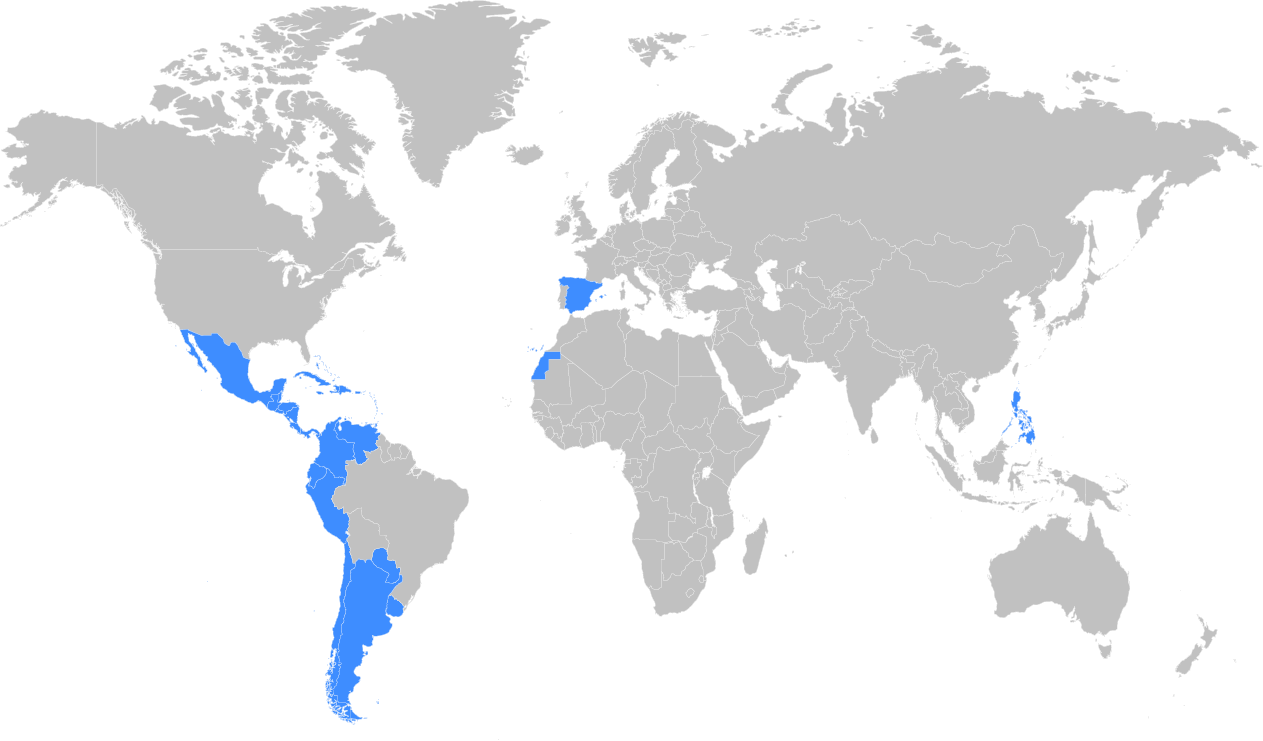
Where Spanish is Spoken
Would the rising incomes represented in the Spanish speaking markets around the world be of interest to your sales efforts? If that’s a resounding “yes”, then let’s discuss this Spanish translation topic a bit further.
Translations Can Quickly Go off the Rails…
Poorly translated material can be embarrassing or worse. Bi-lingual Spanish/English speakers will enjoy:
Las mejores peores traducciones entre el español y el inglés (FOTOS) (The best ‘worst translations’ between Spanish and English)
On a prescription medicine bottle, the English directions were to take the medicine, “...once a day”. The Spanish language version read, “...once veces al día”. That means “eleven times per day” - ‘once’ is Spanish for ‘eleven’. Not. Good.
Or the Starbucks sign that reads: “Exit Only” and is translated as “Exito Aqui” (“I succeed here”. Nice to know but how do I get out of this place?)
Finding the right partner for your Spanish TranslationYou have seen the possible errors. No one in their right mind would want to subject their brand or business to these types of embarrassing mistakes. So what is the first thing to do in avoiding these for your Spanish translation needs?
Website Translation?
Well, the answer is obvious. You need to select the right translation partner. And here is a checklist for that:
- Does the Spanish translation service I will use provide around the clock service?
- Do they have access to the latest technology and tools necessary to ease the burden of Spanish translation?
- Do they have access to professional Spanish translators?
- Will they be able to save me from archaic translation industry practices such as “minimum charges” and “additional charges for proofreading”? and
- Will they be responsive to my needs 24/7 through always accessible account managers?
Not to toot our own horn but MotaWord does these and many more. But let’s get back to the issue of translating your site or content into Spanish...
There’s More Than One Kind of Spanish?
Of these 480 million Spanish speakers it is estimated that 90% are in Latin America. That would cover the varieties of Spanish spoken in the U.S., Mexico, Central and South America, and the Caribbean. The balance are in Spain, the Canary Islands, and Equatorial Guinea.
Spanish Translation for a Globalized Website or Localized Website?
- What countries or regions am I trying to reach?
- Will a broadly understandable globalized website meet my goals?
- If I choose website localization to translate my website into Spanish will it have sufficient impact to justify the time, effort and money to address more specific markets?
You’ll need to do your market research to determine whether to translate your website into the Spanish of a specific region, i.e. opt for website localization or whether to create a globalized website by translating it into Spanish that is more widely accessible but less calibrated to a specific culture.
Globalize: One Size Sorta Fits All?
The kind of Spanish that is understandable to all Spanish speakers has a few names:
- Neutral Spanish
- Standard Spanish
- Global Spanish
- Universal Spanish
Essentially what each of these terms describes is a dialect that is devoid of idioms or local expressions associated with a given country or region. Interestingly, there is a grammatical tense that is infrequently used except in the globalized version of Spanish. That’s the future perfect tense - “I will have completed my work before I go out to dinner.” A globalized website would be translated into this kind of Spanish.
We wrote about this subject earlier on our blog: The Case for Localization
Localize: Let’s Get Specific
The other approach is of course to speak the language of your “target market”. Simply put, if you are selling to Argentina your Spanish translation should respect the local idioms and usage of the Spanish language in Argentina. Website localization requires both translating your website into the dialect used in a country or region while respecting the culture specific to that locale. On a pure vocabulary basis, a frequent example cited is choosing the words, ‘coger’ versus ‘agarrar’. They both mean to grab or pick up but in Latin American Spanish ‘coger’ has the meaning ‘to have sex with someone’. That’s a distinction worth knowing. So converting vocabulary and idioms is only the beginning of translating your website into Spanish that is localized. It also involves knowledge of the culture and how to address the audience in that culture.
So when you ask yourself, what’s the best way to translate my website into Spanish, you know the choice is between website localization or a more general, globalized website. Either way…
Read why MotaWord is your best choice for taking on this job: Why should you run your website localization project on MotaWord?
And then just let us know how we can help...
/f/84976/450x450/4001fb719b/spanish-translation-for-your-website-which-spanish-index.jpg)




